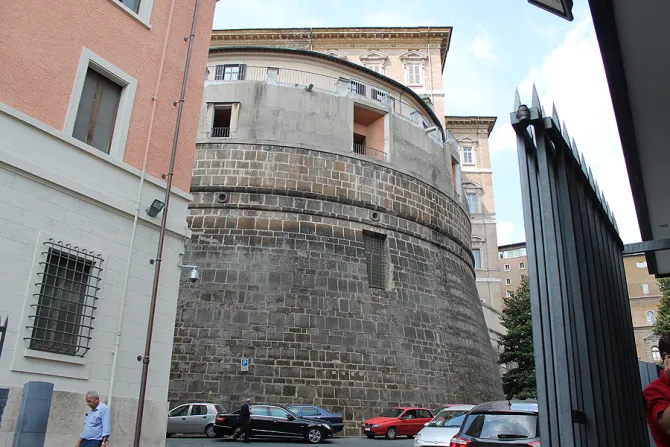Rome Newsroom, Aug 23, 2022 / 05:51 am
Pope Francis has ordered that the Holy See and connected entities move all financial assets to the Institute for Works of Religion (IOR), commonly known as the Vatican bank.
The pope’s rescript, issued Aug. 23, clarifies the interpretation of a paragraph in the new constitution of the Roman Curia, Praedicate Evangelium, promulgated in March.
According to Francis’ rescript, financial and liquid assets held in banks other than the IOR must be moved to the Vatican bank within 30 days of Sept. 1, 2022.
The IOR, based in Vatican City State, has 110 employees and 14,519 clients. As of 2021, it looked after 5.2 billion euros ($5.6 billion) of client assets.
Though commonly called a “bank,” the IOR is technically a financial institute, with no branches, working within Vatican City State to provide services to clients, which include the Holy See and connected entities, religious orders, clergy, Catholic institutions, and Holy See employees.
The IOR saw its number of clients decline by 472, from 14,991 clients at the end of 2020 to 14,519 in 2021. Nearly half of its clients in 2019 were religious orders.
According to its annual report, the financial institution’s $19 million net profit in 2021 was also down from $44 million in 2020 and $46 million in 2019.
In his Aug. 23 rescript, Pope Francis said article 219, paragraph 3 of Praedicate Evangelium “must be interpreted to mean that the activity of asset manager and custodian of the movable patrimony of the Holy See and of the Institutions connected with the Holy See is the exclusive responsibility of the Institute for Works of Religion.”
The decree will force Holy See institutions, including the Secretariat of State, to move their financial assets to the IOR by the end of September. The Secretariat of State is known to have had accounts in Swiss financial institutions, including Credit Suisse, through which the controversial London building investment was initially carried out.
Article 219, paragraph 3 of the new curial constitution says: “The execution of the financial transactions referred to in §§ 1 and 2 is carried out through the Institute for the Works of Religion,” the IOR.
The financial transactions described in paragraphs 1 and 2 of article 219 are the administration and management of the Holy See's real estate and movable assets and entities entrusting their assets to the Holy See.






